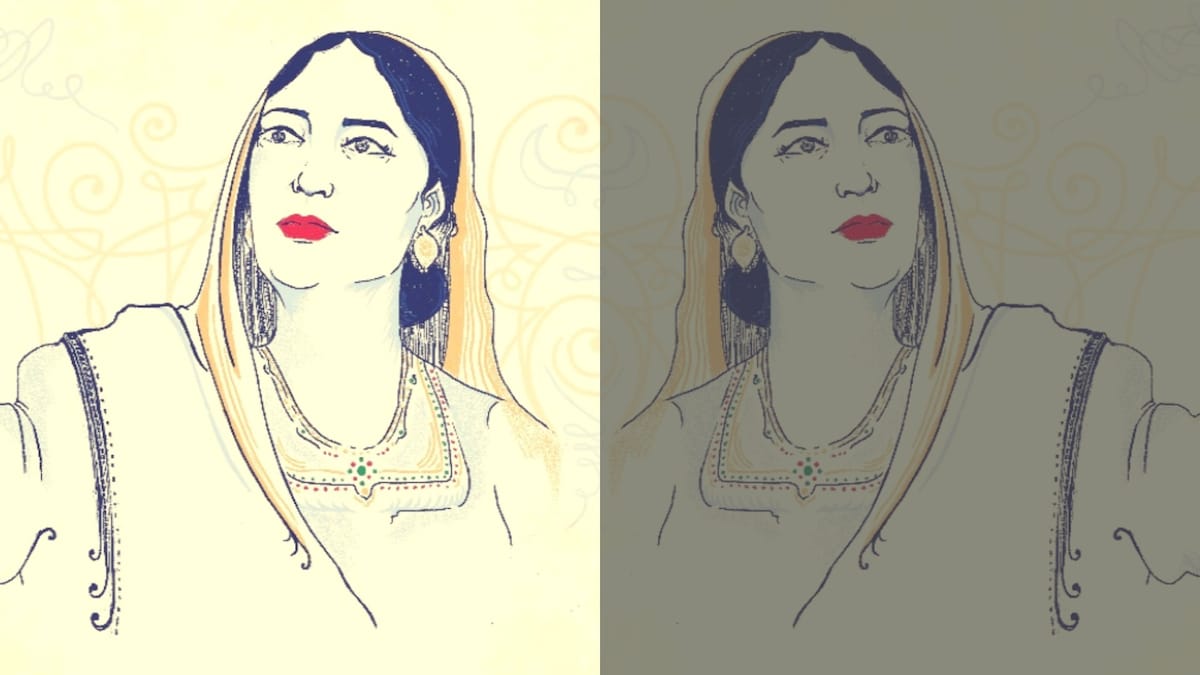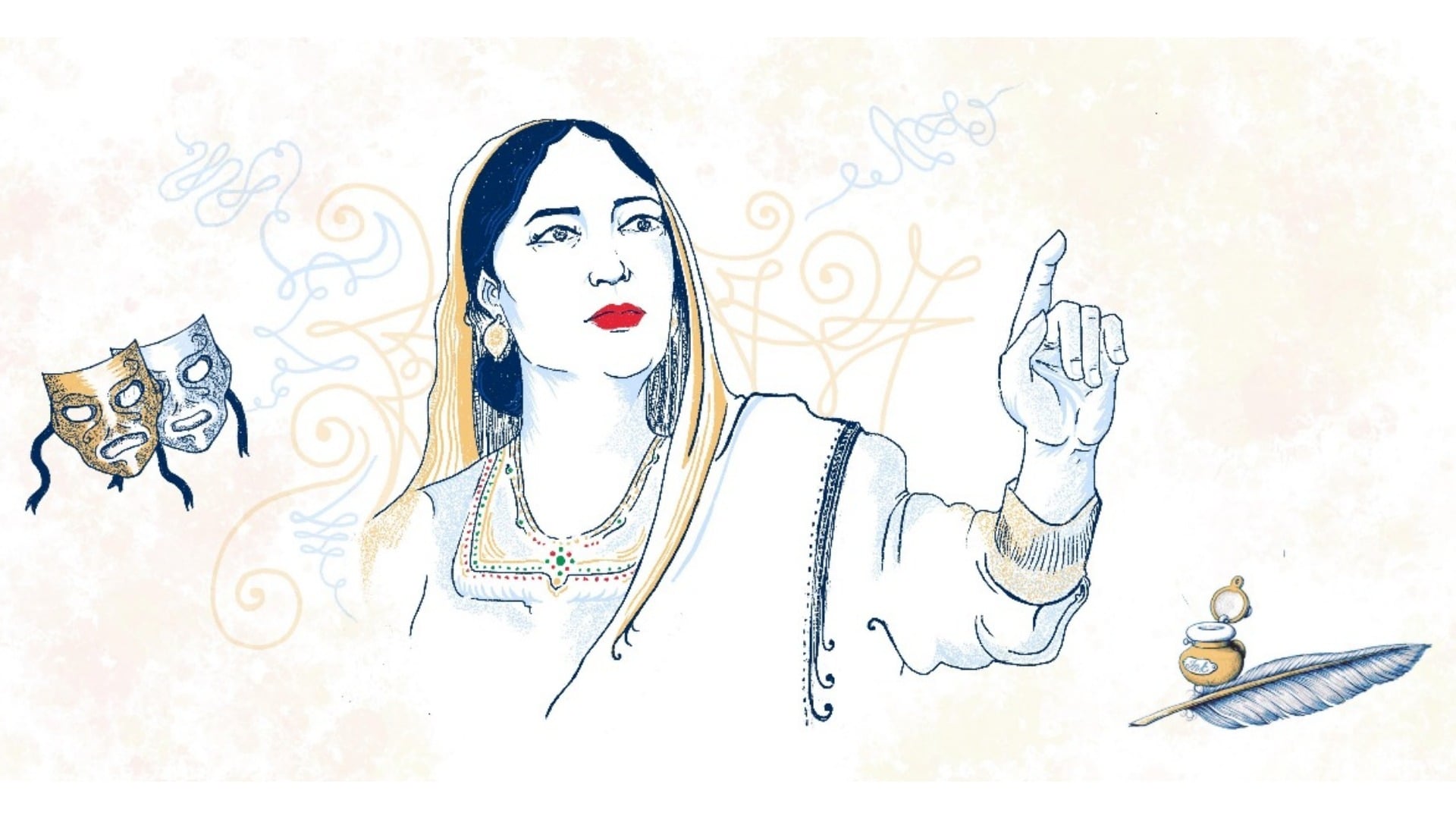
To talk about public theatre in colonial Calcutta is to encounter its actresses.
The very first recorded women actresses that appeared on the stage of the new public theatre in Calcutta were Golap, Elokeshi, Jagattarini, and Shyama. They starred in Michael Madhusudhan Dutt’s Sharmishtha in 1873.
Their arrival on the public stage was a greatly contested matter for society at large — and especially for the elite men who had the means and ability to engage with the theatre as creators and patrons.
Some, like Girish Chandra Ghosh, the actor-director who towered over the early Calcuttan stage, not only supported women acting, he personally trained and worked with them. (This relationship was not straightforward, and is not meant to position him as some kind of feminist champion as we understand the term now — but simply to demonstrate his attitude towards the issue of cis-women acting on stage). Others, like Ishwarchandra Vidyasagar, who participated in social reform movements, vehemently opposed the idea. Vidyasagar, remembered as a social reformer who supported causes like widow remarriage, was so aghast when it came to pass that he resigned from the theatre.
As Lata Singh points out in an essay on modern theatre, an actress was not the intended beneficiary of the social reform movements led by people like Vidyasagar. Singh has pointed to the formation of the oppressive archetype of the ‘ideal’ Indian woman by the Indian nationalist movement, which demonised any woman who fell outside of its narrow criteria. This included any woman who would perform in public. “Women performers were kept out of the frame of the nation in the making,” writes Singh.
Scholars have shown us the dichotomy that this engendered in the lives of actresses. Although the actresses of the time were extremely popular and acclaimed for their work, stigma would dog them in their lifetime, and continues to in their afterlives in our collective memories.
It is in this uncomfortable space that we encounter Tarasundari, one of the most successful and accomplished actresses of her time.
Born in 1878, Tarasundari was introduced to theatre by her neighbour and friend, Binodini. Binodini was 15 years older than her, and was already a well-known actress when Tara started acting. Her first role, at age seven, was that of a little boy in Girish Chandra Ghosh’s Chaitanya Lila, beginning a career that spanned decades.
Despite her professional success, the context in which Tarasundari was performing was extremely difficult.
The translator of Binodini’s two memoirs, Rimli Bhattacharya, who has studied the pivotal role of the actress in Bengal’s theatre history, writes, “[The] professionalisation of the stage with the hiring of actresses provoked a spate of letters, editorials and speeches at public meetings…The greatest fear was that they would corrupt the youth of Bengal… there was a constant fusillade — sometimes bitter and often ludicrous — directed against the actresses.”
The actress was immediately and vehemently derided, and regarded with fear and suspicion. The chief anxiety was her supposed “influence” over young men who were in reality far more socially powerful than her. “The vulnerability of women becomes apparent in this context: almost every little girl who joined the theatre came from what were designated as a-bhadra (‘dis-respectable’) households, usually those of women abandoned by husbands or lovers, or widows without any source of support,” writes Bhattacharya.
In addition to the constant public attacks, professional actresses were not paid equitably, or even enough to be financially secure. They were constantly under pressure to become the mistresses of elite men — entanglements that necessitated the managing of these men’s egos and negotiating with their dictates.

At the same time, the women on stage made pioneering cultural and material contributions to the theatre. Aside from their creative work on stage, they contributed in monetary terms, and by mentoring actors. Tarasundari was part of this — she was acknowledged for teaching, and later in her career, for financing theatrical productions.
But what she was most known for was her prowess as a performer.
Aside from being an actress, Tarasundari was also a dancer, a formally trained singer, as well as a published poet. Like her peers, she played a wide variety of roles — historical figures (Razia Sultana), to literary heroines (Desdemona ), to mystics (Jana), to neo-mythical figures (“Mata Banga Bhasha” — Mother Bengali Language).
Ironically, this last role as the personification of the Bengali language was part of a play to honour Vidyasagar. The editor of Nachgar wrote that the role earned her “a permanent place on the Bengali stage”.
So popular and skilled was Tarasundari that she could save the fortunes of a floundering theatre company or show with her participation. She was given the moniker “the Divine Sarah of Bengal”, after Sarah Bernhardt, the famous 19th century French actress — a move that Bhattacharya reads as “an effort to ‘internationalise’ her”.
Yet Tarasundari has been sidelined, her artistic contributions near-forgotten except in specialist spaces like academia. When Bhattacharya went to meet Prativa Devi, Tarasundari’s daughter, in Bhubaneshwar, she found that “the only material legacy” of the legendary actress that remained was a huge framed photograph. Many researchers had visited before her, and Prativa Devi had found that they had not stopped writing about her mother as “a fallen woman” while Tarasundari’s male colleagues and detractors were remembered with reverence.
Sarvani Gooptu, too, argues in the essay “Memory and the written testimony: The actresses of the public theatre in Calcutta in the 19th and 20th century” that most actresses of this time, including Tarasundari, are remembered in relation to their romantic relationships rather than artistic legacy.
Gooptu criticises the actresses for describing themselves as “lowly” in relation to their mentors and suggests that that is why their achievements were erased. But this self-fashioning cannot possibly be divorced from the context in which they existed, in which they were the targets of constant revulsion. Nor can we accurately assume this was the only way they articulated themselves.
In the context of the constant public attacks against them in the press and in public meetings (despite newspaper reviews that seriously engaged with their work), and the constant questioning of their authenticity (Gooptu points out that the “actual” authorship of the actress and playwright Sukumari’s play was constantly attributed to men she was acquainted with, rather than rightfully to herself), this erasure is part of a venomous legacy that seeks to reduce, to deride, to erase.
One antidote is remembrance — to seek out the material that still remains with us, and to acknowledge the formative influence that an artist of Tarasundari’s stature had on theatre.
source: http://www.firstpost.com / FirstPost. / Home> Long Reads / by Shreya Ila Anasuya